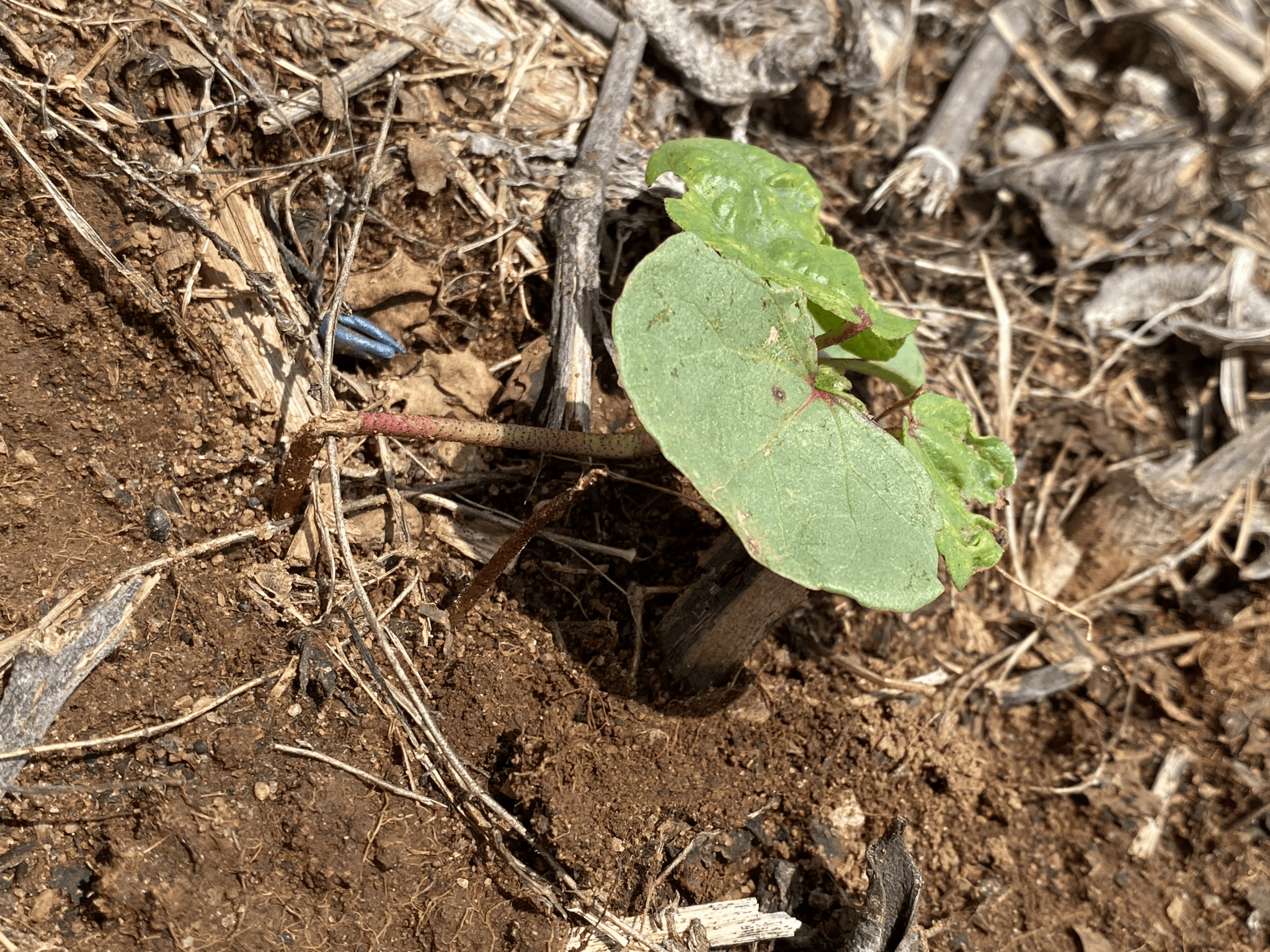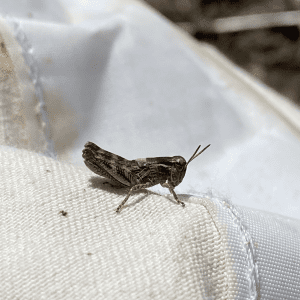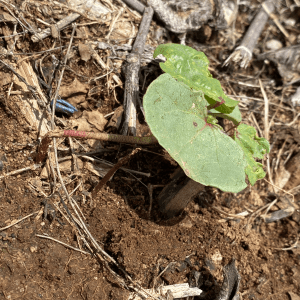Crop Production

Several species of insects can be found in a cotton field at any time. Some are pests, some are beneficials, and some, called incidentals, are just wandering through the field. Effective management requires familiarity with the sporadic insects that may invade a field and regular scouting for their presence.
Weather plays a major role in what types of pests are encountered in cotton. These may include relatively common pests, such as spider mites or threecornered alfalfa hoppers, or real oddballs, such as white-margined burrowing bugs.
Farmers must walk fields weekly as soon as seed goes in the ground. This is the only way to identify potential insect problems and know the necessary measures. This action will maximize yield potential from the start.
Dry-Weather Pests
Grasshoppers
For many years, grasshoppers have been a sporadic pest of seedling cotton in Alabama. Dry weather in winter favors the survival of grasshopper eggs, which are laid in pods in the soil. The increase in reduced and no-till systems has led to increased grasshopper populations, as eggs are not mechanically killed during tillage.
In Alabama, immature grasshoppers begin emerging in late March and continue through June as soil temperatures rise and spring rains occur (figure 1). Grasshoppers damage cotton by feeding on the main stem of seedlings, often in the crook or cracking stage, resulting in stand loss (figure 2). Scouting for grasshoppers is difficult as they are hard to capture in a sweep net.
- Figure 1. Immature differential grasshopper
- Figure 2. Cotton seedling damaged by grasshoppers.
Thresholds for grasshoppers do not currently exist and are unlikely to in the future. This is due to the sporadic feeding nature of grasshoppers and the need for accurate sampling methods.
Fields with grasshopper problems may require preventive approaches, such as adding an insecticide to burndown herbicides. Border sprays are not effective since immature grasshoppers emerge throughout the entire field. Not all immature grasshoppers emerge at the same time, so a long residual insect growth regulator insecticide is effective.
Preventive applications for grasshoppers are ultimately a judgment call based on the risk level a farmer is willing to accept. Most labeled insecticides provide effective control of immature grasshoppers at low labeled rates. Later-developing adults are more difficult to control, even at higher rates.
For more information, see “Insect Pests of Cotton: Grasshoppers” (Extension publication ANR-2764) and the Cotton IPM Guide (Extension publication IPM-0415).
Two-Spotted Spider Mites
Two-spotted spider mites are an increasingly common early-season pest of cotton in Alabama. As acre management continues to shift to reduced tillage and cover cropping systems, this trend will likely continue, particularly in dry springs.
Mite populations build slowly on existing winter vegetation and move to cotton as it emerges in the spring. One way to mitigate spider mite outbreaks is to achieve good burndown. Historically, spider mites were observed mostly as border pests when populations moved from weedy hosts in field edges into cotton fields. Recent outbreaks, however, have been found in the middle of fields, often in areas where good burndown was not achieved.
In hot, dry spells, spider mites can develop from egg to adult in as little as 5 days. Outbreaks are more likely in these conditions and following applications of broad-spectrum insecticides.
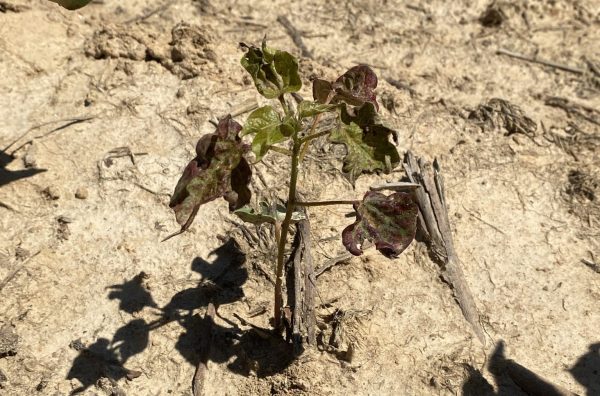
Figure 3. Spider mite damage in seedling cotton
The most efficient way to scout for spider mites is to look for injury symptoms on seedlings (figure 3). Mites cause damage by sucking juices from the bottom of leaf surfaces. Signs of feeding begin as white or yellowish stippling that develops into reddening or purpling of leaves along leaf veins. In seedling cotton, this can lead to defoliation and stand loss in severe outbreaks.
If early signs of spider mite damage are observed, look on the underside of the leaf for mites. Spider mites are small (0.3 mm) and yellowish with two black dots on their backs. A 10-times hand lens is helpful to see mites. Exposing the underside of the leaf may agitate them, causing the mites to move and be easier to see.
Determining when to treat for spider mites requires some professional experience, as management decisions are not based on numbers of mites found. Considerations include the number of plants showing symptoms, the severity of symptoms, and the immediate weather forecast. If no significant rain chances are expected within the next few days, treatment may be warranted.
Up-to-date thresholds and insecticide recommendations can be found in the Cotton IPM Guide (Extension publication IPM-0415).
Threecornered Alfalfa Hoppers
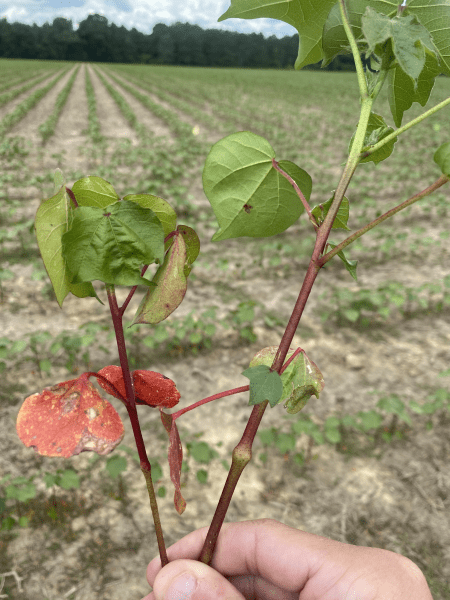
Figure 4. Threecornered alflafa hopper damage in seedling cotton
Threecornered alfalfa hoppers (TCAH) are a sporadic pest of seedling cotton. Infestations tend to be worse on field borders and in dry springs when migrating adults move from weedy hosts to cotton fields.
TCAH damage seedlings by feeding around the main stem (girdling), resulting in a knot below the cotyledons. This knot reduces the ability of the plant to move nutrients and conduct photosynthesis. Damaged plants appear stunted, the leaf veins turn dark red, and the leaves turn a red-orange color (figure 4). Girdling typically is not a concern once plants reach the six or seven node stage.
Although sampling for TCAH is possible, most infestations are observed once plants begin to show symptoms. Damage is often confined to the field borders and may appear disproportionately severe, when in fact there is minor damage to the cotton.
There currently are no established thresholds for TCAH in cotton. Unlike soybean, girdled cotton plants usually die, and neighboring plants compensate for any stand loss.
TCAH can be managed easily with pyrethroids or organophosphates. Economic losses are rare, and treatment is rarely justified. In some cases, TCAH may reinfest fields soon after application, giving the appearance that treatments did not work. Follow-up applications are more likely to flare spider mites than save cotton from economic TCAH damage.
White-Margined Burrower Bug
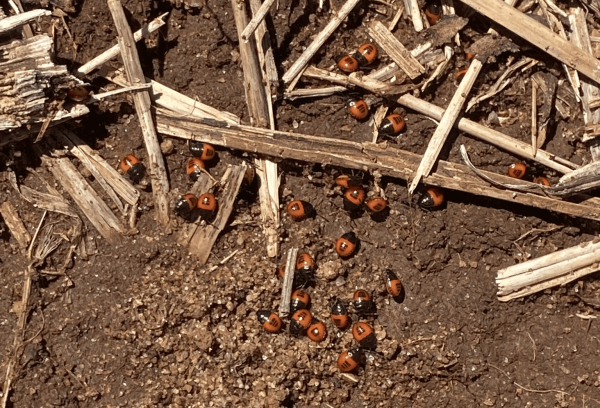
Figure 5. Immature white-margined burrower bugs
White-margined burrower bugs are a sporadic insect found in cotton fields during dry springs. This insect may be confused with the peanut burrower bug, which is an important pest of peanut. Little is known about the life cycle of white-margined burrow bugs or their pest status in cotton.
Adult white-margined burrower bugs are small and black with a white line around their bodies. Their body shape resembles stink bugs. The immatures are similarly shaped with a black thorax and red abdomen with black markings (figure 5).
Though rare, infestations tend to occur in reduced-till fields and dry years. These insects feed on developing seeds and are particularly attracted to seeds in the mint family, such as henbit or purple deadnettle.
Anecdotal observations suggest that these insects are highly susceptible to insecticide seed treatments and do not threaten cotton seedlings. Insecticide applications are not recommended, as the potential to flare other pests is increased.
False Chinch Bug
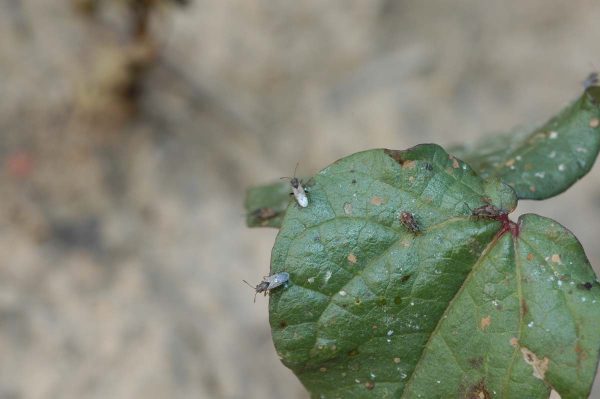
Figure 6. False chinch bugs on seedling cotton. (Photo credit: A. Catchot MSU)
False chinch bugs (FCB) are a rare pest of seedling cotton. This insect can be found in a wide variety of plants and weeds. It increases in population during cool, wet springs where weedy hosts thrive. As conditions become hot and dry and their weedy hosts dry down, chinch bugs move to cotton.
False chinch bugs damage cotton by sucking juices from plants. Heavy infestations can kill cotton seedlings. Infestations are often confined to field borders where populations move from weedy hosts along ditch banks. They also may be found throughout the field if high populations of weeds were present before an herbicide application.
These rare FCB infestations typically occur during dry periods and after an herbicide application that kills weedy host plants. When this happens, FCB has no other hosts to infest but cotton seedlings (figure 6).
Due to the rarity of infestations, there are no thresholds for FCB in cotton. Anecdotal observations suggest some at-plant insecticides, such as aldicarb, provide control. If foliar treatment is warranted, FCB can be difficult to control. In some cases, acephate and bifenthrin tank mixtures tank mixtures are needed to manage populations.
Wet-Weather Pests
Slugs
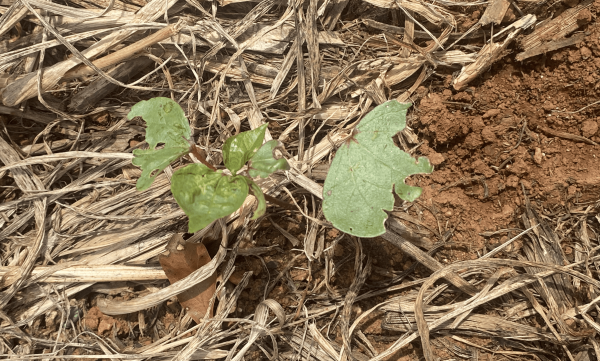
Figure 7. Slug feeding on seedling cotton
Slugs are not insects but are an increasing pest of seedling cotton in Alabama. Known as mollusks, slugs are associated with cool, wet years and reduced-tillage systems. Infestations are more likely to follow high-residue crops, such as corn or grain sorghum.
Slugs may damage cotton by feeding on cotyledons or true leaves, often leaving irregularly shaped holes on leaf edges (figure 7). The greatest risk is stand loss from slugs feeding on the main stem of seedlings.
Slugs are often most active at night and difficult to find during the day. To scout for slugs, scratch the soil surface and look for them.
There are no thresholds for slugs and few effective options for control after planting. In high-risk fields where tillage is not an option, setting row cleaners more aggressively can push back plant residue, which may reduce the risk of injury. Ensuring the furrow’s closure can also help reduce the chances of slugs clipping cotton seedlings before they emerge. Baits containing iron phosphates or metaldehyde are available but in many cases, are cost prohibitive and not readily available.
The best management strategy for slugs is hot, dry growing conditions conducive for seedling growth and bad for slugs. Insecticides have no activity on slugs and should not be used for control.
Snails
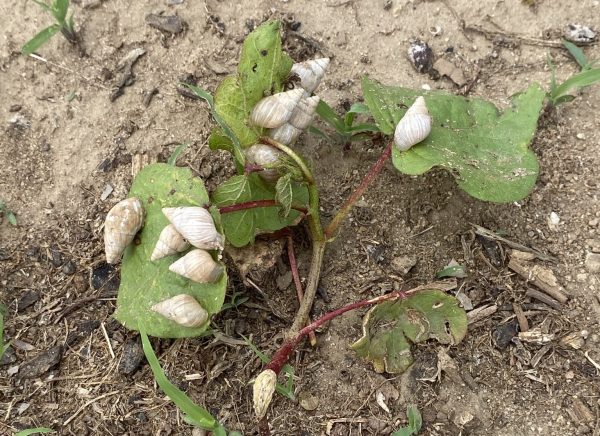
Figure 8. Snails on cotton seedling
Snails are another mollusk pest becoming more of a threat to cotton stand establishment. Although a more consistent issue in south Alabama, infestations have also been observed in central and northeast Alabama.
The most common species of snails currently observed in Alabama cotton feeds are on detritus and decaying organic matter, not on cotton plants. Damage is caused by the sheer number of snails that climb on seedlings, with the resulting weight-breaking plants, causing stand loss (figure 8).
Unlike slugs, snails are easily found during the day and can be differentiated by their shell. Snails may be more numerous in fields with high calcium levels or where lime was overapplied. (Slugs mine lime for shell production.)
There are no thresholds or effective control options for snails. Tillage is the only current option for management. High-risk fields or fields that had issues with snails in the past may benefit from at least light tillage before planting.
Cutworms
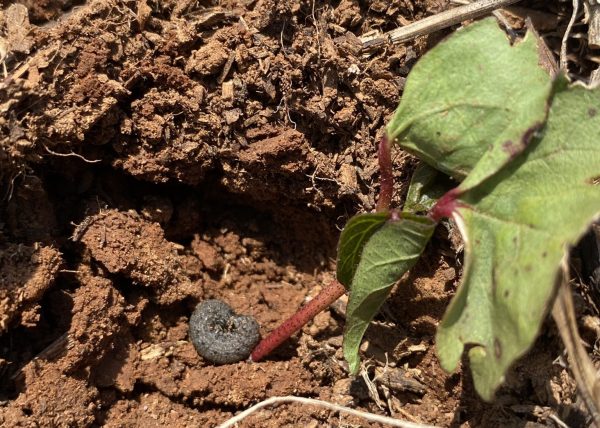
Figure 9. Cutworm and damaged cotton seedling
Several species of cutworms may be observed in wet springs. Vegetation in fields before planting, such as cover crops or weeds, attracts moths to lay eggs. This results in caterpillars being found as cotton emerges. Cutworms are more common in reduced-till fields and low-lying areas where effective burndown was not achieved.
Cutworms are more active at night. They damage seedlings by clipping plants at the soil level and then feeding on leaves below the soil surface. The presence of severed stems with no leaves may be an indicator of cutworm infestations (figure 9). To scout for cutworms, look for signs of stand loss, then scratch below the soil surface and look for the dirty-looking caterpillar.
If herbicide burndown applications are made less than 4 weeks before planting, and conditions are cool and wet, preventive control measures may be justified. Mid-rate pyrethroids often provide adequate control of cutworms when applied with burndown herbicides or within 7 days before or after planting.
For up-to-date thresholds and cutworm insecticide recommendations, consult the Cotton IPM Guide (Extension publication IPM-0415).
True Armyworms
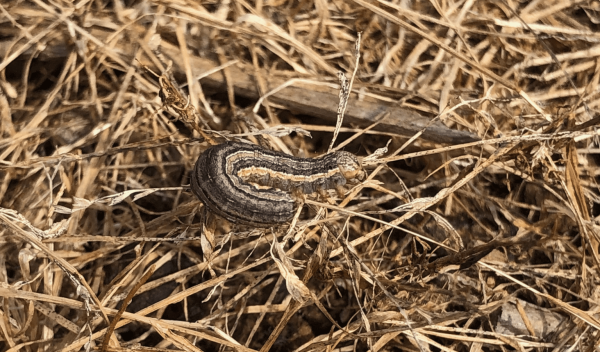
Figure 10. True armyworm caterpillar.
True armyworms are a sporadic pest of seedling cotton in Alabama. Infestations are almost always confined to reduced-tillage systems, as moths are attracted to existing vegetation for egg laying.
These caterpillars are commonly found on grasses in the spring and may require treatment in wheat. Infestations are more likely to occur following fields planted with grass cover crops, such as cereal rye.
The caterpillars are a light brown or tannish color and have characteristic black bands around their legs (figure 10). Like other spring pests, the threat of damage is from stand loss by caterpillars clipping seedling stems.
Scouting for true armyworms is best done in the morning, as larvae hide under plant stubble during the heat of the day. There are no established thresholds for true armyworms in cotton. Planting into fields with infestations is not advised. If populations are observed, mid-rate pyrethroids often provide adequate control when applied with burndown herbicides or within 7 days before or after planting.
Summary
Insect management is different from all other aspects of cotton production. The cotton insect situation changes from year to year, week to week, and field to field in the approximately 20,000 cotton fields across Alabama.
Weather has a significant effect on which pest species are most likely to be problematic that year. Although pests such as thrips, plant bugs, and stink bugs are consistent threats, sporadic pests sometimes cause more headaches because farmers have less experience with them.
Effective management of key and sporadic insect pests requires regular scouting. Weekly scouting is the only way to know what insects are in fields and at what levels. Farmers must become familiar with the sporadic insects of cotton to properly differentiate between pests, beneficials, and incidentals.
 Scott H. Graham, Extension Specialist, Assistant Professor, Entomology and Plant Pathology, Auburn University
Scott H. Graham, Extension Specialist, Assistant Professor, Entomology and Plant Pathology, Auburn University
New November 2022, Sporadic Pests of Seedling Cotton in Alabama, ANR-2948

